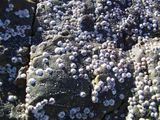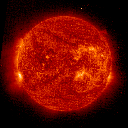Weigh anchor or I’ll give you a taste of the cap’n’s daughter
 There are about 1,200 known species of weird critters like these barnacles. When I see them on rocks I can't help thinking of ships, because the problem that barnacles cause ship and boat owners is legendary.
There are about 1,200 known species of weird critters like these barnacles. When I see them on rocks I can't help thinking of ships, because the problem that barnacles cause ship and boat owners is legendary.If you want to talk like a pirate, of course, a smattering of barnacle in your vocabulary will take you far: "I'll crush ye barnacles!" is good, and in Sydney, "How'd you like to scrape the barnacles off of me rudder?" is said to be a winning line in any Woolloomooloo dockside pub.
One recalls, too, that not only pirates but the British Navy practised the ghastly punishment of 'keelhauling', by which a miscreant sailor was tied to a rope looped beneath the vessel, thrown overboard, and then dragged under the keel and up the other side. It might have helped clean the barnacles from the keel, but it certainly usually ended in death for the sailor as the barnacles ripped his flesh like a cat o'nine tails -- arrr arrr.
While we're on the subject, the Barnacle Goose gets its name from the ancient European belief that it grew from the Gooseneck barnacle, Pollicipes polymerus. Because the eggs and goslings of this bird were never seen (as it bred in the remote Arctic), the folks had to find some explanation, and it must be said that Gooseneck barnacles do look somewhat goosey. Because they were often found on driftwood, people assumed that the barnacles had grown on branches before dropping into the sea.
Indeed, Giraldus Cambrensis, a 12th-century Welsh monk (would he lie?) claimed in Topographia Hiberniae to have seen goose barnacles in the process of turning into barnacle geese. Medieval people didn't know if they were fish or fowl, and in 1215, Pope Innocent III forbade the eating of them during Lent. It might even be that the word 'barnacle' is a corruption of Hibernicae, or things that originate in Ireland (Hibernia), whence some people might have thought the Barnacle goose itself originated.
Be that as it may, these Sandy beach barnacles aren't going anywhere, and certainly not skyward. They just sit there, keelhauling any scurvy landlubber who ventures to walk on the rocks barefoot
(Click thumbnail to enlarge)



















0 Comments:
Post a Comment
<< Home